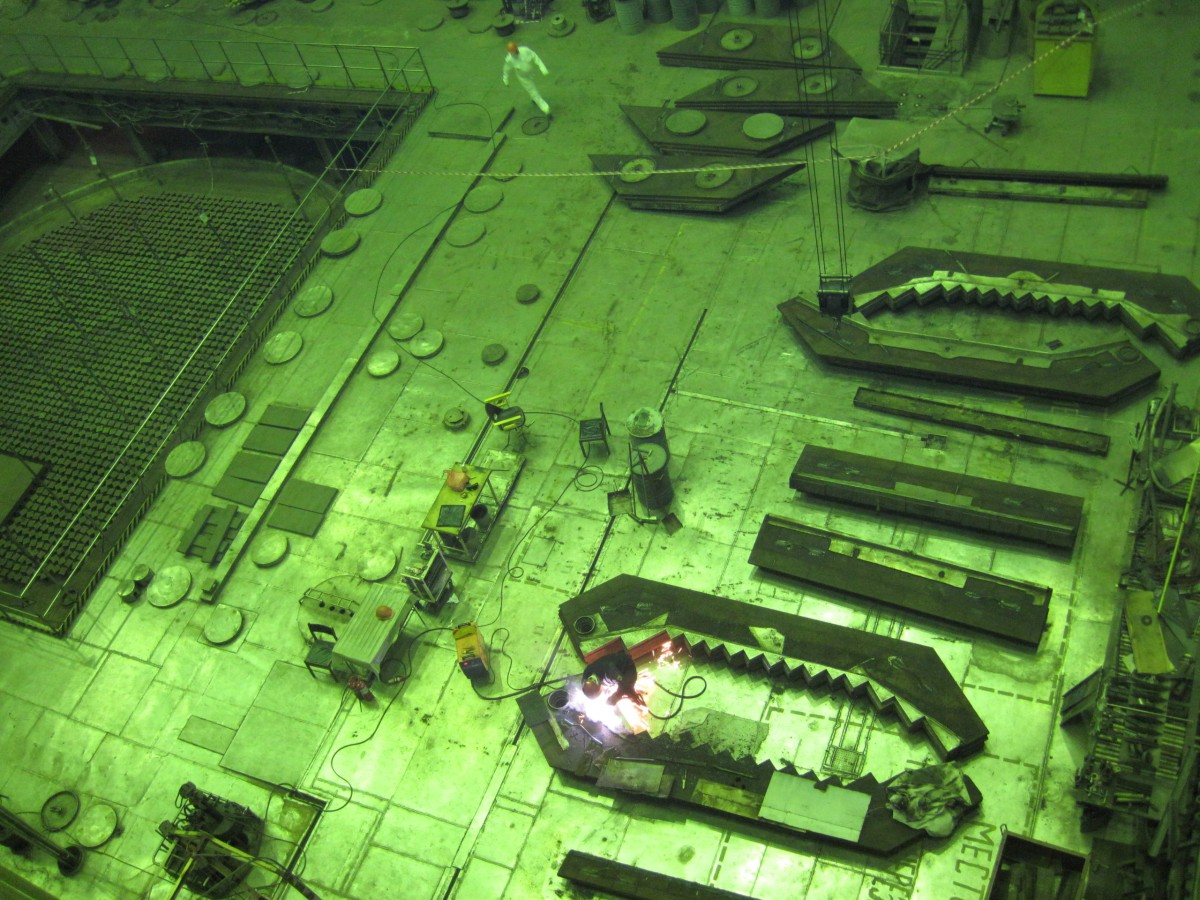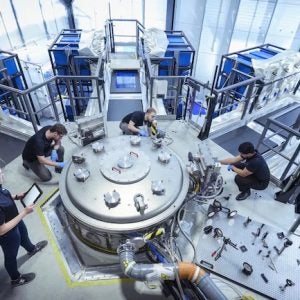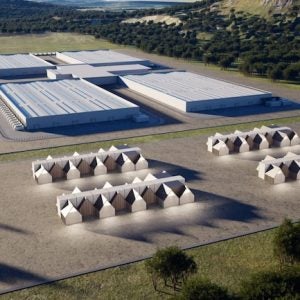 Russia’s Experimental-Demonstration Centre for Decommissioning Uranium-Graphite Nuclear Reactors (UDC UGR, part of state nuclear corporation Rosatom) has completed the dismantling and fragmentation of technological equipment and pipelines at the industrial reactors ADE-4 and ADE-5 at the Siberian Chemical Combine (SCC) in Seversk. The AD series reactors, designed by OKBM, are water-cooled uranium-graphite thermal neutron reactors.
Russia’s Experimental-Demonstration Centre for Decommissioning Uranium-Graphite Nuclear Reactors (UDC UGR, part of state nuclear corporation Rosatom) has completed the dismantling and fragmentation of technological equipment and pipelines at the industrial reactors ADE-4 and ADE-5 at the Siberian Chemical Combine (SCC) in Seversk. The AD series reactors, designed by OKBM, are water-cooled uranium-graphite thermal neutron reactors.
A total of five industrial uranium-graphite reactors operated at SCC: I-1, EI-2, ADE-3, ADE-4, ADE-5. They were intended for the production of plutonium with ADE-4, ADE-5 also producing production of thermal and electrical energy. The decommissioning of EI-2 was formally accepted as completed by a government commission in 2015 – the first ever decommissioning of a commercial uranium-graphite reactor. To guarantee safe storage of the reactor for tens of thousands of years, SCC in 2010 established UDC UGR, which, in co-operation with leading research centres of the Russian Academy of Sciences, developed a unique decommissioning technology whereby all reactor cavities were filled with a mix of natural clays.
EI-2 began operating in February 1958 at the Tomsk-7 closed city (now Seversk). It was SCC's second industrial uranium-graphite reactor. The first (I-1) was launched in 1955 and together they formed the first dual-purpose NPP producing both weapons-grade plutonium and 100MWe of electricity. In the 1960s SCC put three more dual-purpose reactors into operation – ADE-3 (1961), ADE-4 (1964) and ADE-5 (1965) boosting power production to 600 MWe. These were designed by the NN Dollezhal Research & Development Institute of Power Engineering (Nikiet).
Under a Russian-US agreement to end production of military-grade plutonium, I-1 was closed in 1990, EI-2 in 1991 and ADE-3 in 1992. ADE 4 and ADE 5 continued operating until 2008 as they also provided power to the site. After the decommissioning of EI-2 in 2015, it was expected that the withdrawal of the remaining four shutdown reactors at SCC would take about five years but this was extended by a year and in 2021, Rosatom signed a state contract with UDC UGR, which was tasked with dismantling and fragmentation of radiation-contaminated equipment and pipelines, as well as concreting of the ADE-5 sub-reactor space. The work was expected to take two years.
In the course of the work, some 1,500 tons of equipment and pipelines of the first and second circuits of the ADE-4 and ADE-5 reactors were dismantled and fragmented, which, according to the results of radiation measurements, were classified as radioactive waste. They were fragmented, packaged in containers and placed on a specially prepared temporary storage site. Part of the dismantled pipelines was deactivated and returned to the national economy as scrap metal.
The need to carry out work on the dismantling and movement of large-tonnage equipment under cramped conditions when exposed to radiation exposure significantly complicated the work.” explained Egor Paderin, head of the decommissioning service of nuclear installations.
A lot of preparatory work was carried out to concrete the sub-reactor space of the ADE-5 reactor mine: access roads for concrete trucks and concrete pump installation sites were organised, walkways and open-air openings were made in the walls and inter-story floors. During preparation of the premises for concreting, 107 tons of equipment and metal structures, about eight tons of plastic and more than two tons of electric cable were dismantled. All generated waste was fragmented, packaged in containers and placed on the special site. When concreting the reactor mine, heavy concrete with a waterproofing additive was used. In total, more than 2,500 cubic metres of concrete was required for the bottom of the reactor mine
All work under the state contract was completed in full and on time for a total cost of RUB412m ($6m). The work was carried as part of the project “Decommissioning of industrial uranium-graphite reactors ADE-4 and ADE-5 using the ‘on-site burial’ option developed by the All-Russia Science Research and Design Institute of Power Engineering Technology (VNIPIET).
As well as the three uranium graphite reactors built at SCC, three others were constructed at the Mining and Chemical Combine (MCC) in Zheleznogorsk (Krasnoyarsk). The first AD reactor was launched in 1958 at MCC, solely for plutonium production. The second, ADE-1, launched in 1961, was intended also to produce electricity (hence the “E” for energy in its name) but never did so as the combined heat and power plant (CHPP) had not been completed. ADE-2 began operation in December 1963 after the CHPP was in place. All three reactors were built underground and used cooling water from the Yenisei River.
It was a huge undertaking. Some 27,000 prisoners worked on the construction of underground reactors. The volume of rock removed was several million cubic metres. More than 1 million cubic metres of concrete were laid, and tens of thousands of tons of metal structures, pipelines, cables were put in place. In the underground rooms, giant fans were installed with a capacity of about 1m cubic metres of air per hour. In 1992, the AD and ADE-1 reactors at MCC were shut down. MCC is investigating possible methods for decommissioning AD and ADE-1, Following public hearings in 2013 MCC said it favoured burying them on site as the mountain under which they were built forms a natural safety barrier.
ADE-2 was the last of Russia’s dual purpose plutonium production reactors to be closed. It was shut down in 2010, after producing weapons-grade plutonium for nearly 52 years, in line with a 1997 Plutonium Production Reactor Agreement with the US. It also provided heat and electricity to Zheleznogorsk and nearby areas, which was its main function after1993. It continued to produce weapons-grade plutonium as a by-product, but under the terms of the US agreement, this could not be used for weapons purposes and was stockpiled.
ADE-2 in 2021 became a nuclear industry museum, joining the world's first nuclear icebreaker Lenin and the Obninsk NPP, the world's first civil nuclear power plant.
Image: Dismantling and fragmentation of slabs (courtesy of Rosatom)






